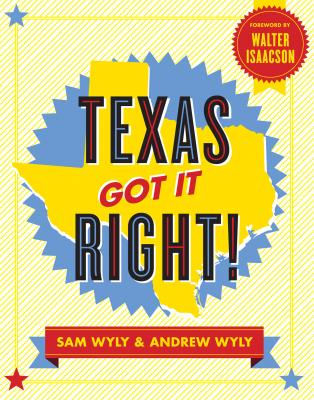ТОП просматриваемых книг сайта:
Texas Got It Right!. Sam Wyly
Читать онлайн.Название Texas Got It Right!
Год выпуска 0
isbn 9781595910769
Автор произведения Sam Wyly
Жанр Экономика
Издательство Ingram
states’ one (3.5 miles). The rewards are tangible
TEXAS GOT IT RIGHT!
24
today. Oil, gas, and mineral leases on the state’s
public onshore and offshore territory have helped
finance an enormous permanent public education
endowment at both the K–12 and university levels,
and Texas’s extrawide coastal waters hold colossal
renewable-energy potential. Independent energy pro-
ducers operating in Texas currently hold leases for
4,000 megawatts of offshore wind capacity, enough
to power 3.2 million homes. Once again, Texas
proves that independence pays.
TEXAS GOT IT RIGHT!
25
“The hopes of the usurper were
inspired by a belief that the citizens of
Texas were disunited and divided in
opinion, and that alone has been the
cause of the present invasion of our
rights. He shall realize the fallacy of
his hopes, in the union of her citizens,
and their Eternal Resistance to his
plans against constitutional liberty.
We will enjoy our birth-right, or
perish in its defense.”
—Sam Houston, in his Call to Arms
of December 12, 1835
No single name is more revered in Texas than that
of Sam Houston. Not because that name has been
given to countless schools, libraries, and public
spaces, and to our biggest city. No, Sam Houston is
revered by Texans because the man deserves it. He
TEXAS GOT IT RIGHT!
26
led the Battle of San Jacinto, which won the Texas
War of Independence. Then he became the first
president of the fledgling Republic of Texas. Then,
three years after his first term ended, he came back
for a second, out of sheer love and duty. When the
Lone Star Nation became a U.S. state, the people
elected him senator. Then they elected him gover-
nor. And let’s not forget that before Sam Houston
became Texas’s most famous Texan, he’d already
started the first primary school in Tennessee
(though he’d received little formal education of his
own), been a congressman and governor for that
state, fought against the mistreatment of Indians
before Congress, and taken a bullet in the War
of 1812.
The challenges Houston faced in life would cer-
tainly have been more than enough to take down
almost any man. But Sam Houston was Scots-Irish
to the core—indomitable, resolute, independent. As
with many Americans of Scots-Irish decent, Hous-
ton’s family history can be traced to Ulster, Ireland,
then across the Atlantic to Pennsylvania, to the
farms of the Shenandoah Valley, to Virginia, and
later to the mountains of East Tennessee. His Pres-
byterian upbringing engendered in him a respect
for the common man and for democratic ideals, and
his early life acquainted him intimately with the
value of hard physical work.
Abandoning a job at his family’s store in
Maryville, Tennessee, Houston left home at sixteen
to live with the Cherokee Indians on an island in
the Hiawassee River. To the Cherokees he was
known as the Raven. He adopted their language,
customs, and dress. Throughout his life, and espe-
cially in times of personal pain and uncertainty,
Houston turned to his adopted family for support
and guidance. His support for Indian nations put
him in conflict with his mentor, Andrew Jackson,
but Houston always held firm. “I am aware that in
presenting myself as the advocate of the Indians and
their rights,” he proclaimed to Congress, “I shall
stand very much alone.” But standing alone was not
something Houston feared.
That’s probably a big part of what drew him to
Texas in 1832. There was the lure of free land, sure,
but there was also the promise of building a future
unobstructed by conventional viewpoints and hierar-
chical political systems. Like so many others, Houston
was immediately caught up in the enthusiasm of the
Texas Revolution. Never hesitant to use strong words
or to take up arms for a cause, Houston became com-
mander-in-chief of the Army of Texas. In that capacity
he issued his eloquent and effective Call to Arms
against the Republic of Mexico in December 1835.
Years later, as a senator, Houston foresaw the cat-
aclysm that would become the Civil War. He urged
his fellow legislators to support the Compromise of
1850. In a stirring speech he invoked the scripture
with the words “a nation divided against itself cannot
stand.” It wasn’t until eight years later, as the nation
hurtled toward the disaster Houston had tried to
avert, that Abraham Lincoln made those words
famous for posterity. In short, Houston was a man of
arms who deemed keeping the peace the noblest deed
of the mighty.
Opposite: Sam Houston circa 1861. This page, left: This flag was
flown at a fort near Goliad before being destroyed during the
massacre

